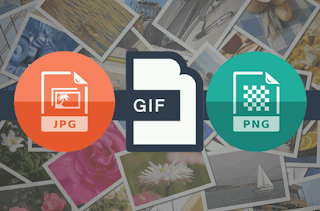
South Korea's prime minister announced his resignation Sunday morning, taking responsibility for the slow initial reaction to a ferry's sinking that has left nearly 200 dead and scores more still missing.
Prime Minister Chung Hong-won explained his decision on national television. He apologized "on behalf of the government for the many problems that arose during the first response and the subsequent rescue operation," in addition to "problems that existed before the accident."
"During the search process, the government took inadequate measures and disappointed the public," Chung said. "I should take responsibility for everything as the prime minister, but the government can assume no more. So I will resign as prime minister."
Chung urged South Koreans to stand united, rather than divided.
"This is not the time for blaming each other but for finishing the rescue operation and dealing with the accident," he said. "In order to get over these difficult times, I ask the citizens for help."
Chung becomes the highest-profile public figure to fall after the April 16 sinking of a ferry carrying South Korean high school students. The response to that emergency has been lambasted by many in the country.
Searchers are still looking for passengers and crew aboard the Sewol ferry. They have retrieved 188 bodies so far, with another 114 still missing.
A father of a girl who was on the ferry and is still missing called Chung's resignation "meaningless."
He and the girl's mother and sister are outraged at the government about what they say is a disorganized rescue operation.
Chung "doesn't want to take responsibility for this mess," the mother told CNN's Nic Robertson.
The only way a strong statement could be made would be if President Park Geun-hye resigned, the mother said, adding "that might actually do something."
The prime minister's role is to coordinate other ministries within government, say experts in South Korean politics. The president appoints the prime minister, and Park will choose the next prime minister.
Though the legislature can question that person before he or she takes the job, ultimately the president alone has the power to choose who gets the job, said Nicholas N. Eberstadt with the American Enterprise Institute, who has written extensively about North and South Korea.
Chung wasn't "a beloved figure, but he wasn't especially unpopular," Eberstadt said.
The capsizing of the ferry is the biggest disaster in recent South Korean history, and it's a huge story there, occupying hours and hours of news coverage, said David Straub, the associate director of the Korean Studies Program at the Walter H. Shorenstein Asia-Pacific Research Center at Stanford University.
Park is very popular, he said.
"I'm sure she and the people around her are concerned about (how the ferry disaster has unfolded)," Straub said.
Both experts said they thought it was inconceivable that the president would resign.
A single body
Eleven days after the ferry capsized, searchers were still looking for passengers and crew aboard the Sewol ferry.
The search Sunday was suspended due to bad weather that made diving through the murky waters especially dangerous, but divers made an exception and went down to recover a single body.
A day earlier, divers found the bodies of 48 girls -- wearing their life jackets -- pressed into a room too small for so many people.
Divers believe that they will face the same scene again. There may be a second, similar room, where 50 more girls are believed to have been trapped when the ferry rolled over.
South Korean coast guard diver Kim Dong-soo said he had tears in his eyes when he heard about the accident.
"Even now, I'm searching as if I'm looking for my own children -- and other coast guards feel the same way," he told CNN. "I have two medical patches on me, have difficulty breathing and my head hurts. But it hurts the most in my heart, knowing those children are still in the cold water."
Those still diving face a search that is getting harder and slower.
Now they will head down deep for cabins near the seabed.
In the cramped spaces, divers have been battling a forest of drifting objects and doors forced shut by tremendous water pressure. Currents tug at the breathing tubes that keep them alive as they look for the dead.
There may be fewer bodies to retrieve, but divers have already searched the easily accessible places, said South Korean navy Capt. Kim Jin-hwang, commander of the rescue operation.
"But the navy will not stop until the last body is found," he said.
Fisherman: Disaster haunts his sleep
Fisherman Kim Hyun-ho finds no peace when he lies down at night. The hundreds of dead or missing passengers from the Sewol ferry disaster haunt his sleep.
Their screams ring in his head. He has vivid memories of his rush to save them in his modest fishing boat off South Korea's coast 11 days ago.
Kim thinks he may have pulled 25 people from the frigid waters of the Yellow Sea, he said Saturday. But the man from a nearby tiny island of just 100 people feels no pride, only torment.
"It was hell. Agonizing. There were a lot of people and not enough boats, people in the water yelling for help. The ferry was sinking fast," he said.
He watched people trapped inside go under with the vessel yards in front of him. Then he heard on television how many people were sealed up in the ship.
The father of two grown children is heartbroken for the hundreds of parents who have lost theirs, those he could not save.
He's trying to fish again, but he's a changed man, he says.
Legal ramifications
As the effort inside the ship continues, South Korean authorities are pressing a criminal investigation into the sinking.
It's resulted in the arrests of the ship's captain and 14 other members. Prosecutors in Mokpo, South Korea, who are leading the ferry investigation, tell CNN that all the 15 crew members in charge of sailing and the engine room have been indicted and are being held in the Mokpo prison.
Yang Joong-Jin, the senior prosecutor for the investigation task force, said they all face charges of "causing death by abandoning (ship), and violation of the country's marine law, the Rescue and Aid at Sea and in the River Act."
Investigators also searched the company that owned the ferry and the home of the man whose family controls it, and conducted a wide-ranging probe into the country's marine industry.
Prosecutors have said that authorities have yet to determine what caused the sinking.
Leading theories include changes made to increase the ferry's passenger capacity, and shifting cargo.
On Friday, investigators checked out the Sewol's sister ship, the Ohamana, and said they found 40 of its life rafts weren't working, emergency slides to help evacuate passengers were inoperable, and equipment to tie down cars and cargo either was nonexistent or didn't work very well.
Like the Sewol, the Ohamana had been modified to add more passengers, the prosecutor's office said.
Investigators are looking into whether those modifications could have contributed to the Sewol's fate.
Kim Yong-rok, an opposition lawmaker who represents Jindo, an island near where the ship sank, told CNN that modifications to add 117 more passenger cabins to the ship raised the ferry's center of gravity.
On Friday, the South Korean Ministry of Oceans and Fisheries announced it would ask lawmakers to consider legislation prohibiting modifications to ships to increase passenger capacity.
From BEN Latest News: www.benlatestnews.com
Follow us on Twitter: www.twitter.com/benlatestnews
































